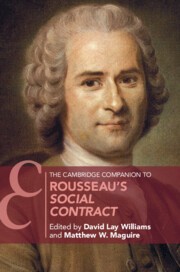2782 results
A longitudinal network analysis of suicide risk factors among service members and veterans sampled for suicidal ideation or attempt
-
- Journal:
- Psychological Medicine , First View
- Published online by Cambridge University Press:
- 23 April 2024, pp. 1-11
-
- Article
-
- You have access
- Open access
- HTML
- Export citation
Chapter 4.1 - Bipolar Disorder
-
-
- Book:
- Seminars in General Adult Psychiatry
- Published online:
- 04 April 2024
- Print publication:
- 18 April 2024, pp 162-182
-
- Chapter
- Export citation
Querying ‘Global’ Music History: Significant Geographies between Goswami Pannalal and Queen Victoria
-
- Journal:
- Royal Musical Association Research Chronicle ,
- Published online by Cambridge University Press:
- 05 April 2024, pp. 1-12
-
- Article
-
- You have access
- Open access
- HTML
- Export citation
546 Using Contingency Management to Understand the Cardiovascular, Immune and Psychosocial Benefits of Reduced Cocaine Use: A Protocol for a Randomized Controlled Trial
- Part of
-
- Journal:
- Journal of Clinical and Translational Science / Volume 8 / Issue s1 / April 2024
- Published online by Cambridge University Press:
- 03 April 2024, p. 163
-
- Article
-
- You have access
- Open access
- Export citation
565 Empowering Community Organizations with the Team Science Community Toolkit
- Part of
-
- Journal:
- Journal of Clinical and Translational Science / Volume 8 / Issue s1 / April 2024
- Published online by Cambridge University Press:
- 03 April 2024, pp. 168-169
-
- Article
-
- You have access
- Open access
- Export citation
428 Promoting Infant Gut Barrier Development Through Culturally Relevant Adoption of Fruit and Vegetable Intake.
- Part of
-
- Journal:
- Journal of Clinical and Translational Science / Volume 8 / Issue s1 / April 2024
- Published online by Cambridge University Press:
- 03 April 2024, pp. 127-128
-
- Article
-
- You have access
- Open access
- Export citation
294 Strategies for engaging patients in building a model for patient partner engagement to accelerate translational science
- Part of
-
- Journal:
- Journal of Clinical and Translational Science / Volume 8 / Issue s1 / April 2024
- Published online by Cambridge University Press:
- 03 April 2024, pp. 90-91
-
- Article
-
- You have access
- Open access
- Export citation
Obsidian Procurement and Exchange at the Apogee of Empire: Wari Political Economy in Arequipa, Peru
-
- Journal:
- Latin American Antiquity , First View
- Published online by Cambridge University Press:
- 07 March 2024, pp. 1-21
-
- Article
-
- You have access
- Open access
- HTML
- Export citation
A 19F Nuclear Magnetic Resonance Study of Natural Clays
-
- Journal:
- Clays and Clay Minerals / Volume 43 / Issue 6 / December 1995
- Published online by Cambridge University Press:
- 28 February 2024, pp. 697-704
-
- Article
- Export citation
Calorimetric Measurement of the Enthalpy of Hydration of Clinoptilolite
-
- Journal:
- Clays and Clay Minerals / Volume 45 / Issue 6 / December 1997
- Published online by Cambridge University Press:
- 28 February 2024, pp. 826-833
-
- Article
- Export citation
Contents
-
- Book:
- The Cambridge Companion to Rousseau's <i>Social Contract</i>
- Published online:
- 28 March 2024
- Print publication:
- 22 February 2024, pp vii-viii
-
- Chapter
- Export citation
Acknowledgments
-
- Book:
- The Cambridge Companion to Rousseau's <i>Social Contract</i>
- Published online:
- 28 March 2024
- Print publication:
- 22 February 2024, pp xiii-xiv
-
- Chapter
- Export citation

The Cambridge Companion to Rousseau's Social Contract
-
- Published online:
- 28 March 2024
- Print publication:
- 22 February 2024
1 - Introduction
-
-
- Book:
- The Cambridge Companion to Rousseau's <i>Social Contract</i>
- Published online:
- 28 March 2024
- Print publication:
- 22 February 2024, pp 1-9
-
- Chapter
- Export citation
Contributors
-
- Book:
- The Cambridge Companion to Rousseau's <i>Social Contract</i>
- Published online:
- 28 March 2024
- Print publication:
- 22 February 2024, pp ix-xii
-
- Chapter
- Export citation
Bibliography
-
- Book:
- The Cambridge Companion to Rousseau's <i>Social Contract</i>
- Published online:
- 28 March 2024
- Print publication:
- 22 February 2024, pp 339-355
-
- Chapter
- Export citation
Copyright page
-
- Book:
- The Cambridge Companion to Rousseau's <i>Social Contract</i>
- Published online:
- 28 March 2024
- Print publication:
- 22 February 2024, pp iv-iv
-
- Chapter
- Export citation
Index
-
- Book:
- The Cambridge Companion to Rousseau's <i>Social Contract</i>
- Published online:
- 28 March 2024
- Print publication:
- 22 February 2024, pp 356-365
-
- Chapter
- Export citation
6 - Rousseau’s Ancient Ends of Legislation
-
-
- Book:
- The Cambridge Companion to Rousseau's <i>Social Contract</i>
- Published online:
- 28 March 2024
- Print publication:
- 22 February 2024, pp 113-137
-
- Chapter
- Export citation
Dedication
-
- Book:
- The Cambridge Companion to Rousseau's <i>Social Contract</i>
- Published online:
- 28 March 2024
- Print publication:
- 22 February 2024, pp v-vi
-
- Chapter
- Export citation



